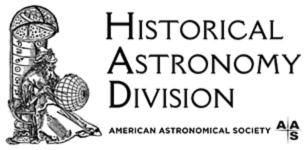This Month in Astronomical History: Comet Shoemaker-Levy 9
Teresa Wilson United States Naval Observatory
 Each month as part of this new series from the Historical Astronomy Division of the AAS, an important discovery or memorable event in the history of astronomy will be highlighted. This month, the 1994 collision of Comet Shoemaker-Levy 9 with Jupiter is in the spotlight.
Each month as part of this new series from the Historical Astronomy Division of the AAS, an important discovery or memorable event in the history of astronomy will be highlighted. This month, the 1994 collision of Comet Shoemaker-Levy 9 with Jupiter is in the spotlight.
A special comet in a number of ways, Shoemaker-Levy 9 made history when it collided with Jupiter in July 1994, leaving noticeable scars on the surface of the planet for weeks afterwards.
Shoemaker-Levy 9 was discovered in March 1993 and was the ninth comet to be discovered by astronomers Carolyn and Eugene Shoemaker and David Levy (hence its name). While it was noted that its orbit came very close to Jupiter, further studies were required before it became known that the comet was orbiting Jupiter rather than the sun, the first of its kind to be discovered.
 After tracing back the comet’s orbital motion, research showed it had been captured by Jupiter in the mid-1960s or early 1970s when the comet found itself within Jupiter’s Roche sphere and the planet’s gravity pulled it into an orbit. This new orbit had apparently caused the comet to come very close (within the orbit of the planet’s inner-most moons) to Jupiter in July 1992, which caused it to split in to several fragments, later named Fragment A through Fragment W. Planetary astronomers became very excited when calculations suggested that fragments would collide with Jupiter in July 1994 over a period of five days, providing the first direct observation of an extraterrestrial collision of solar system objects by astronomers.
After tracing back the comet’s orbital motion, research showed it had been captured by Jupiter in the mid-1960s or early 1970s when the comet found itself within Jupiter’s Roche sphere and the planet’s gravity pulled it into an orbit. This new orbit had apparently caused the comet to come very close (within the orbit of the planet’s inner-most moons) to Jupiter in July 1992, which caused it to split in to several fragments, later named Fragment A through Fragment W. Planetary astronomers became very excited when calculations suggested that fragments would collide with Jupiter in July 1994 over a period of five days, providing the first direct observation of an extraterrestrial collision of solar system objects by astronomers.
As the calculated day approached, terrestrial telescopes and space observatories, such as the Hubble Space Telescope and the Galileo spacecraft, were trained on Jupiter. Even the Ulysses spacecraft, designed primarily for solar observations, and the Voyager 2 probe, on its way out of the solar system, took observations of this monumental occasion. When the first impact occurred at 20:13 UTC on 16 July, astronomers were not prepared for what they were about to witness.
Fragment A entered Jupiter’s southern hemisphere as a fireball with a peak temperature of 24,000K. While the impacts took place on the side of Jupiter hidden from Earth, its rapid rotation allowed terrestrial observers to see the impact sites within minutes of the collisions. Galileo’s position allowed for direct observation of the collisions in real time. None of the predictions had anticipated the comet’s fireball appearance as it entered Jupiter’s atmosphere, nor could they foresee just how visible the impact sites would be. As the sites rotated into view, the magnitude of the effects of this collision became very apparent. The first impact created a huge dark spot, about 6,000 kilometers (about one Earth radius) across and was visible even with very small telescopes. Over the next week, 21 fragments pummeled the surface of Jupiter creating noticeable impact sites, the most significant of which was from Fragment G, whose impact caused a dark spot over 12,000 km across and released the energy equivalent of 6 million megatons of TNT. After a month, the impact scars had noticeably faded and have been completely wiped for several years now, but the effects of this collision are still being studied today.

